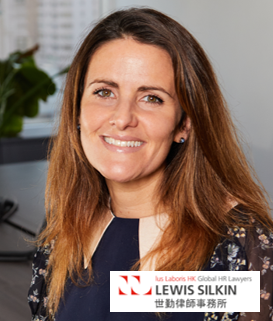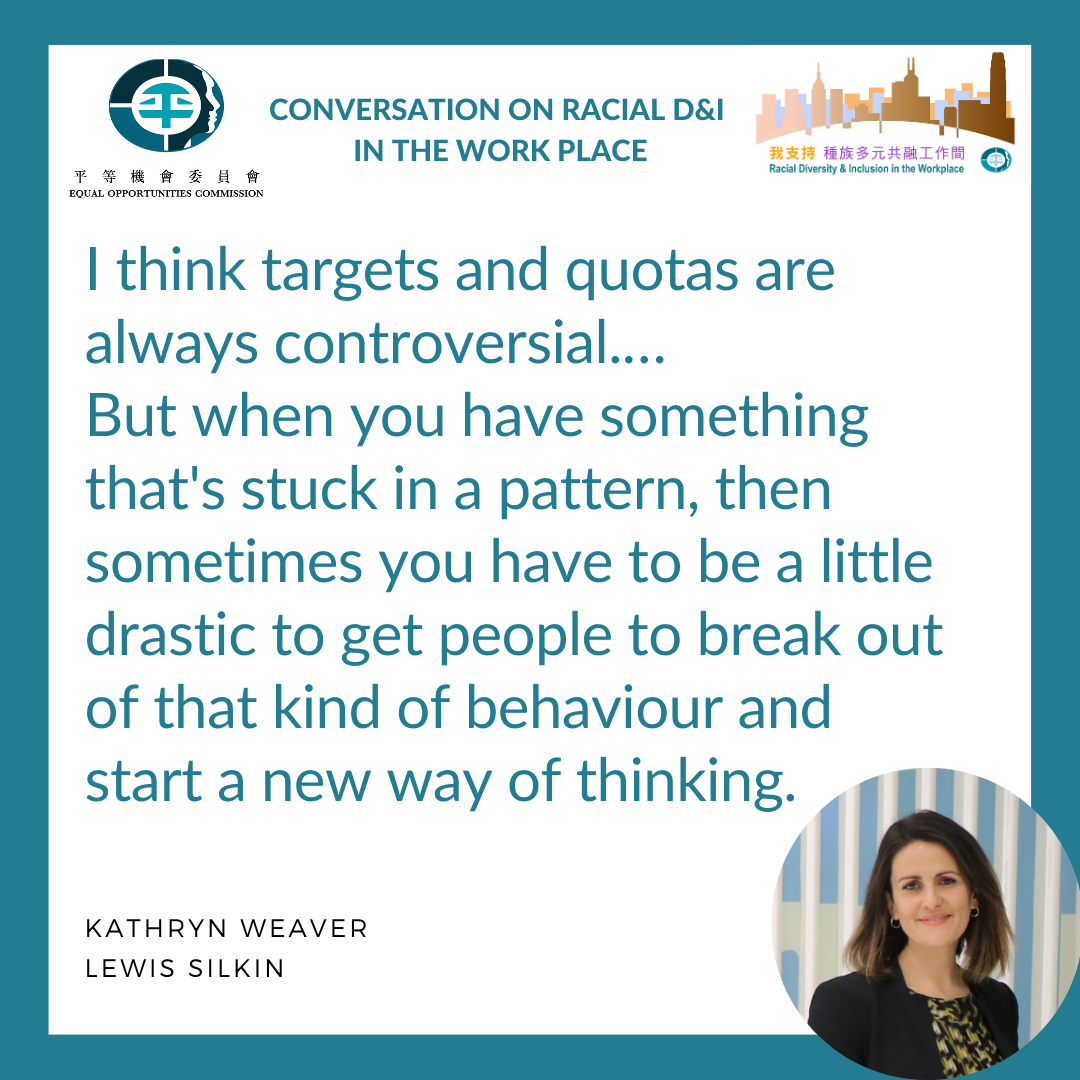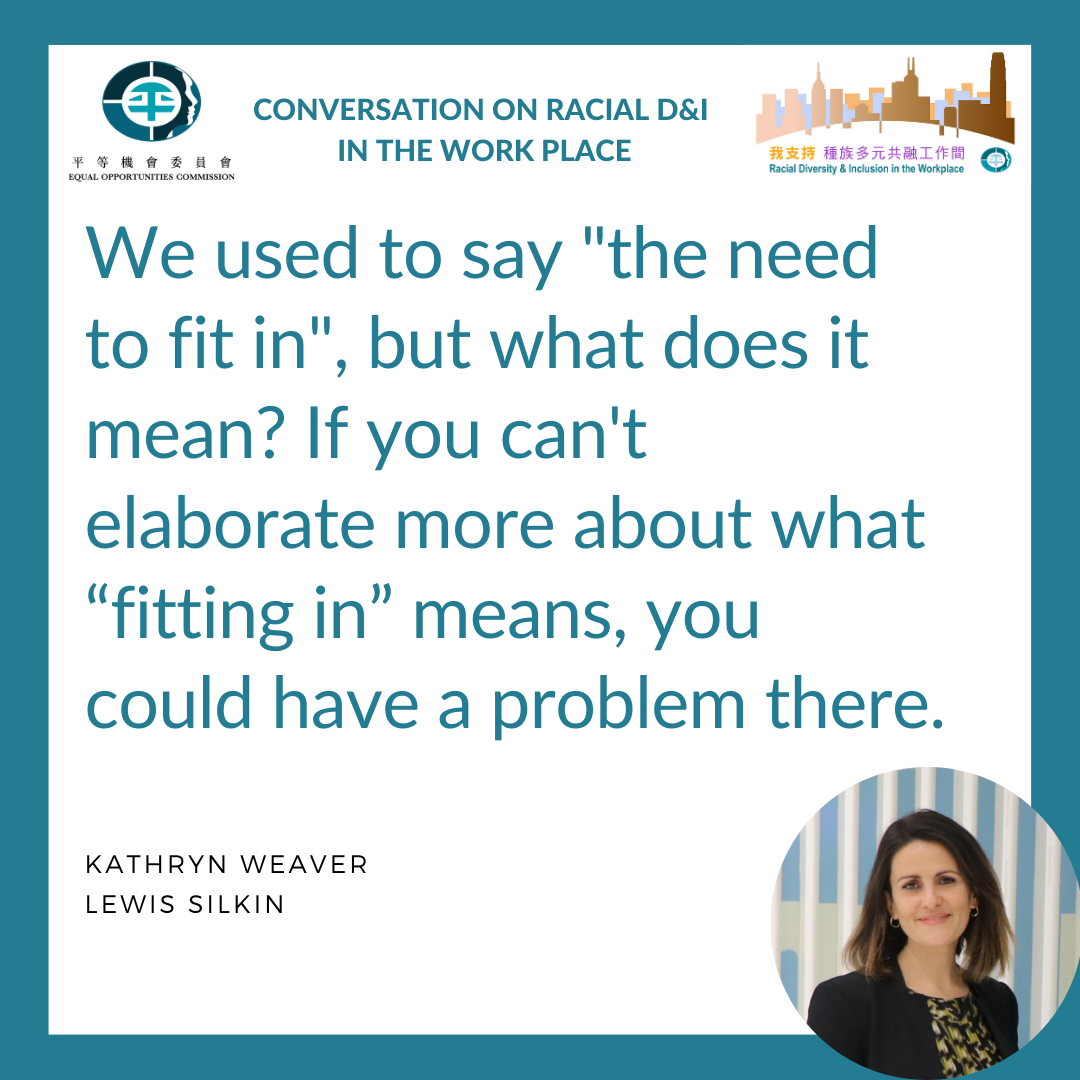Racial D&I Conversation with Kathryn Weaver (Lewis Silkin)(24 February 2021)
A Conversation on Racial D&I with Kathryn Weaver
(Partner, Lewis Silkin LLP, HK)
Breaking Entrenched Behavior to Achieve Racial D&I Progress

Kathryn Weaver, Partner at Lewis Silkin and head of the Hong Kong office, believes that even though setting targets and quotas for diversity is controversial, it may be necessary to do something drastic to break an entrenched pattern and start a new way of thinking.
Setting D&I targets
At Lewis Silkin operations worldwide, not only have targets been set for black and ethnic minority recruitment for 2022-2025, they also plan to publish their ethnic pay distribution data to make sure they are paying people equally.
Furthermore, the firm makes D&I targets part of the key performance indicators (KPI) for all partners. Also, Kathryn says in order for employees to be considered for a promotion or pay rise, the firm has made participation in certain staff training compulsory, such as the anti-racism and ally-ship training.
Ensuring diverse recruitment
Diversity begins with recruitment and Kathryn stresses the importance of working closely with the recruiter to make sure you have a diverse talent pool to begin with. She says it is important for the recruiter to be given a clear idea about the skill and experience required in candidates. The process employed by the recruiter, such as standardised questions, clear matrix for scoring etc. are important too so no unconscious or conscious bias can creep in.
Focus on inclusion
At Lewis Silkin, several initiatives are in place to ensure inclusion, an important part of D&I. But Kathryn points out that, “you need to keep checking in and taking the temperature of how people feel around certain issues.” They have collected 2,200 employee feedback so far on different topics including diversity, inclusion and wellbeing through employee engagement surveys.
Having people to talk to is also essential to check for inclusion and wellbeing. At Lewis Silkin, there are Career Development Partners who are like mentors, Talent Partners that look after employee growth and a Guardian system with people trained on mental health.
Monitoring and course-setting
However, simply monitoring is not enough. Once a problem has been identified it needs to be addressed. “How to improve your workforce and how to make them feel included and supported, and how to ensure the company is going in the right direction should be made an everyday agenda by the D&I ambassador,” Kathryn says. She strongly feels that the company needs to lead from the top-down and C-suite should be role models.
Race discrimination
As a law firm, Lewis Silkin sees some, but not too many race discrimination cases. Kathryn observes, “Race discrimination doesn’t often come in saying race discrimination. It will be around language, treatment and unconscious bias.” She also points to the slippery criterion of “the need to fit in” which unless clearly articulated, can lead to non-objective and non-inclusive criteria for promotion, pay rises and progression.
The final argument for D&I change
Finally, when asked how to affect D&I changes in an organisation, she said money often comes into the picture. Other convincing arguments for change include staff retention, talent attraction, brand reputation as well as productivity linked to staff wellbeing. “All these different aspects mean that it is no longer just a nice tick in the box. It has an overall impact on your company internally and externally.”
To watch the interview, please visit: https://www.facebook.com/embracecampaignbyeoc/videos/266060975088577



